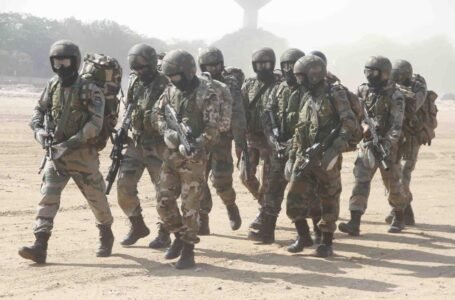Exploring the origin Vocals of Indian Music : Khyal Gharana
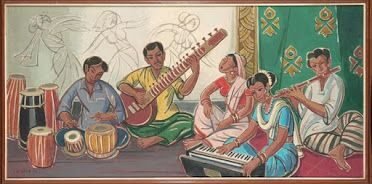
Exploring the Rich Heritage of Khyal Gharanas: A Journey Through the Diverse Schools of Indian Classical Music
INTRODUCTION
Khyal is a popular genre of North Indian classical music that is primarily vocal in nature. It is a form of Hindustani music that combines improvisation and structured composition. Khyal is characterised by exploring different melodic and rhythmic patterns within the framework of a set melody.
Gharanas are schools or lineages of music that have developed over time. They are named after the place where they originated and the family or teacher that established them. Each Gharana has its own unique style and approach to music, and students learn by studying directly under a teacher within that gharana.
There are several significant gharanas in the Khyal tradition, each with its own distinctive characteristics and techniques. These gharanas include Agra, Gwalior, Jaipur, Kirana, Patiala, and Rampur-Sahaswan.
In this article, we will explore the rich heritage of Khyal gharanas, taking a journey through the diverse schools of Indian classical music. We will examine the history and development of each gharana, and explore the unique features and techniques that distinguish them. By delving into the world of Khyal gharanas, we can gain a deeper understanding and appreciation of the complex and beautiful art form that is North Indian classical music.
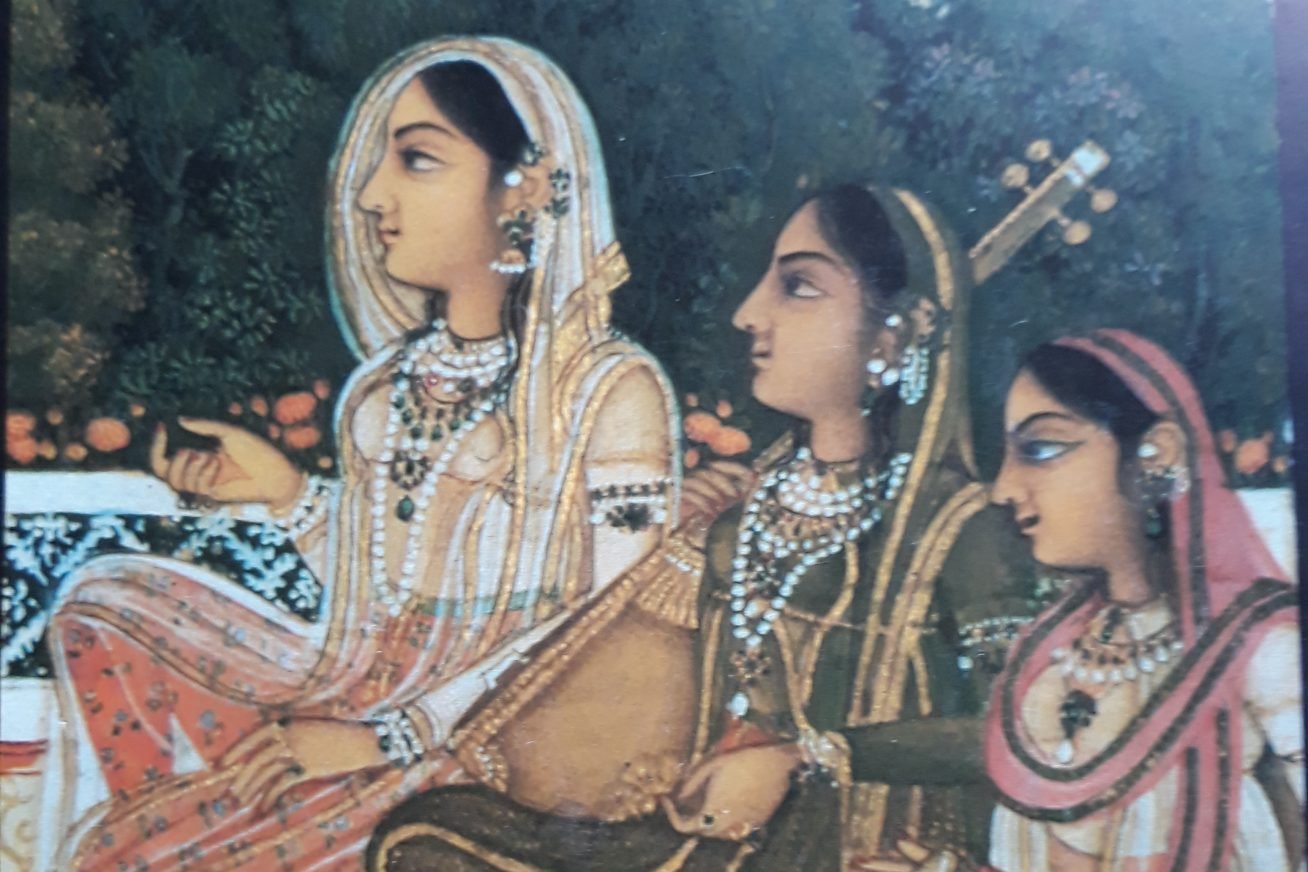
ORIGIN OF KHYAL GHARANAS
The origin of the Khyal gharanas can be traced back to the Mughal era of India, which lasted from the 16th to the 19th centuries. During this time, a number of different styles and approaches to classical music developed, each influenced by the cultural and artistic traditions of the region.
The Khyal style is said to have evolved from the earlier Dhrupad style of singing, which was characterized by a more restrained and formal approach to music. The Khyal style, on the other hand, is known for its more lively and improvisational nature.
The Agra gharana is considered to be one of the earliest Khyal gharanas, and it is believed to have been established in the mid-19th century by Ustad Ghagge Nazir Khan. The Gwalior gharana, which is known for its emphasis on intricate taans and sargam, is said to have been founded by Miyan Tansen, a legendary musician and composer who lived during the reign of Mughal Emperor Akbar in the 16th century.

Over time, other gharanas emerged, each with its own unique style and approach to music. The Jaipur gharana, for example, is known for its use of intricate rhythmic patterns, while the Kirana gharana is famous for its delicate and nuanced approach to melody.
Today, the Khyal gharanas continue to be an important part of North Indian classical music, and their rich heritage and traditions are passed down from teacher to student through a rigorous system of musical education and training.
LEADER OF KHYAL GHARANAS
The Khyal gharanas are each associated with a number of prominent musicians and teachers who have contributed to the development and evolution of the style. While there is no single leader of the Khyal gharanas, many musicians have achieved legendary status within their respective schools and have left a lasting impact on the tradition.
For example, the Agra gharana is associated with Ustad Faiyaz Khan, who is considered to be one of the greatest Khyal singers of all time. Khan was known for his incredible vocal range and control, and his legacy continues to influence musicians to this day.
Similarly, the Gwalior gharana is associated with several legendary musicians, including Ustad Haddu Khan and Ustad Alladiya Khan. Haddu Khan was known for his innovative approach to music, which incorporated elements of other regional styles, while Alladiya Khan is credited with creating the khayal form as it is known today.
The Jaipur gharana is associated with several prominent musicians as well, including Ustad Alladiya Khan’s disciple Ustad Nathu Khan and his son Ustad Mallikarjun Mansur, who is known for his powerful and emotive renditions of Khyal.
The Kirana gharana is associated with Ustad Abdul Karim Khan, who is considered to be one of the greatest Khyal singers of the 20th century. Khan’s style was characterized by its subtlety and delicacy, and his influence can be heard in the music of many of his disciples and followers.
Overall, while there is no one leader of the Khyal gharanas, the rich legacy of these musicians and teachers continues to inspire and influence musicians around the world.
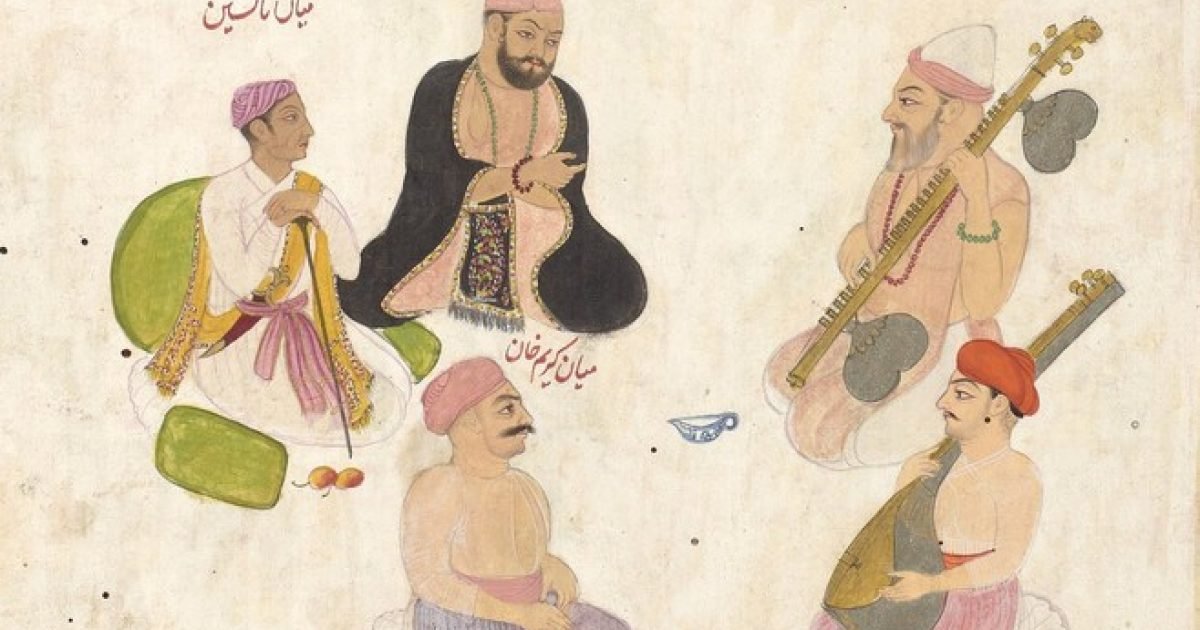
TYPES OF KHAYAL GHARANAS
There are several major Khyal gharanas, each with their own unique style and approach to music. Some of the most well-known gharanas include:
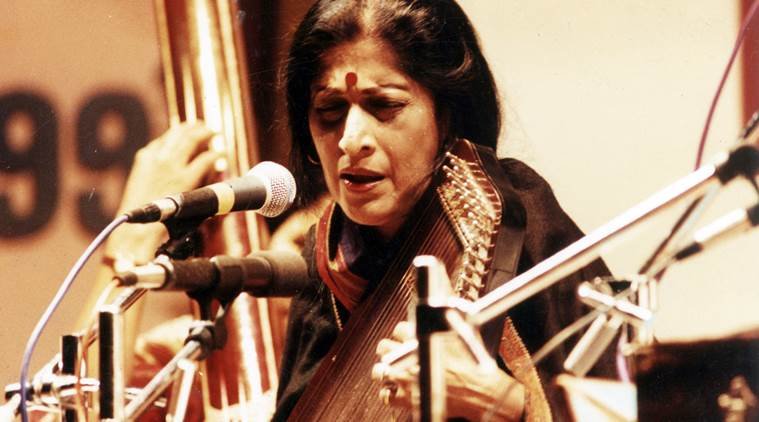
- Agra Gharana – This gharana is known for its emphasis on complex taans and intricate rhythm patterns, as well as its use of bol-baant, or rhythmic phrasing.
- Gwalior Gharana – This gharana is known for its use of meend, a gliding technique used to connect notes, as well as its emphasis on sargam, the solfege system used in Indian classical music.
- Jaipur Gharana – This gharana is known for its emphasis on tihais, a type of rhythmic pattern that is repeated three times, as well as its use of intricate rhythm cycles.
- Patiala Gharana – This gharana is known for its emphasis on tappa, a fast-paced style of singing that incorporates elements of folk music.
- Rampur-Sahaswan Gharana – This gharana is known for its use of alaap, a type of melodic improvisation, as well as its emphasis on layakari, or the manipulation of rhythm.
Each gharana has its own distinctive techniques and characteristics, and students learn by studying directly under a teacher within that gharana. While the gharanas share a common foundation in the Khyal style, the differences between them make for a diverse and dynamic tradition of Indian classical music.

FEATURES OF GHARANAS
The Khyal gharanas share certain common features and characteristics, which have come to define the style. Some of the key features of Khyal gharanas include:
- Improvisation: Khyal gharanas are known for their improvisational nature, with musicians often adding their own flourishes and variations to a piece.
- Emphasis on melody: Khyal gharanas place a strong emphasis on melody, with singers often using a range of vocal techniques to create intricate and ornate melodies.

- Use of rhythmic cycles: Khyal gharanas often use complex rhythmic cycles, or taals, which provide a structure for the improvisations.
- Repetition: Many Khyal gharanas make use of repetition as a means of creating tension and building momentum within a piece.
- Mastery of vocal techniques: Singers within the Khyal gharanas are often expected to master a range of vocal techniques, including meend (gliding between notes), sargam (solfege), bol-baant (rhythmic phrasing), and layakari (manipulation of rhythm).
- Close relationship between teacher and student: Khyal gharanas are traditionally passed down from teacher to student through a rigorous system of musical education and training.

- Emphasis on expression and emotion: Khyal gharanas are known for their ability to convey a range of emotions and moods through their music, with singers often using subtle variations in pitch, timbre, and rhythm to create a rich and expressive performance.
Overall, the Khyal gharanas represent a rich and diverse tradition of Indian classical music, characterized by its emphasis on melody, improvisation, and technical mastery.
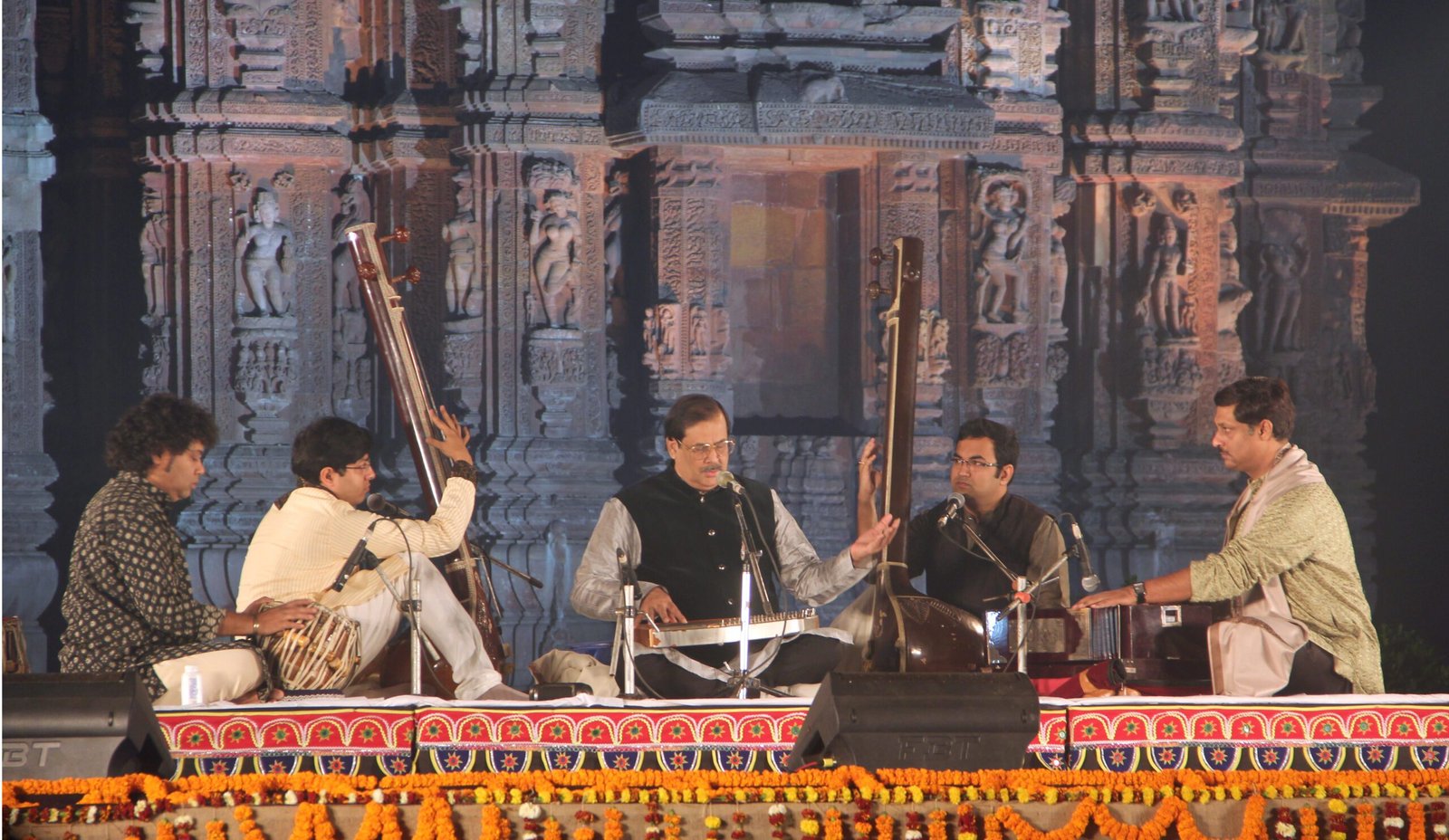
FAMOUS ARTISTS OF KHAYAL GHARANASA
The Khyal gharanas have produced many famous artists, each with their own unique style and contribution to the tradition. Some of the most well-known Khyal singers include:
- Ustad Faiyaz Khan – Agra Gharana: Ustad Faiyaz Khan (1886-1950) was one of the most renowned vocalists of the 20th century. He was a master of the Agra Gharana, known for his powerful voice and his ability to perform complex taans and intricate rhythmic patterns. He was also known for his contributions to Hindustani classical music, including the development of a new raga, Darbari Kanada
- Ustad Abdul Karim Khan – Kirana Gharana: Ustad Abdul Karim Khan (1872-1937) was one of the most influential vocalists of the 20th century. He was a master of the Kirana Gharana, known for his delicate and nuanced approach to melody, as well as his use of meend and gamak, or embellishments. He was also known for his ability to create a sense of stillness and tranquility in his performances, and for his contributions to the development of the raga Bhairavi.

- Ustad Bade Ghulam Ali Khan – Patiala Gharana: Ustad Bade Ghulam Ali Khan (1902-1968) was one of the greatest vocalists of the 20th century. He was a master of the Patiala Gharana, known for his powerful and emotive renditions of Khyal. He was also known for his mastery of thumri, a lighter style of Hindustani classical music, and for his ability to infuse his performances with a sense of drama and emotion.
- Ustad Amir Khan – Indore Gharana: Ustad Amir Khan (1912-1974) was a renowned vocalist of the Indore Gharana. He was known for his ability to create a sense of intimacy and introspection in his performances, as well as his use of layakari and taankari. He was also known for his contributions to the development of the raga Yaman Kalyan, and for his ability to convey a sense of longing and nostalgia in his performances.
- Pandit Mallikarjun Mansur – Jaipur Gharana: Pandit Mallikarjun Mansur (1910-1992) was one of the most prominent vocalists of the Jaipur Gharana. He was known for his powerful and emotive voice, as well as his use of sargam and tihais. He was also known for his ability to perform complex and intricate taans, and for his mastery of the raga Bhairavi.

Each of these artists has left a lasting impact on the Khyal tradition and has helped shape the style uniquely. Other notable artists include Ustad Bade Ghulam Ali Khan, who was known for his powerful and emotive renditions of Khyal, and Pandit Bhimsen Joshi, who is remembered for his rich and expressive voice. Today, many talented Khyal singers and musicians are carrying on the legacy of these great artists and continuing to push the boundaries of the tradition.

CURRENT SCENARIO
The Khyal gharanas continue to be an important and vibrant part of the Hindustani classical music tradition today. While the gharana system has become somewhat less rigid over time, with many musicians drawing on multiple gharanas and experimenting with new approaches to performance, the core elements of the Khyal tradition continue to be widely practiced and celebrated.
In recent years, there has been a growing interest in Khyal music both in India and around the world. Many talented young musicians are taking up the tradition, and there are a growing number of opportunities for them to perform and showcase their skills.
At the same time, there are also concerns about the future of the tradition, particularly as it faces competition from other forms of music and entertainment. Some musicians and scholars worry that the deep knowledge and technical mastery required to become a true master of the Khyal tradition may be lost in the rush to modernize and innovate.
Despite these challenges, however, the Khyal gharanas continue to be a rich and vital part of the cultural heritage of India and an important contribution to the world of music. Through their innovative approaches and deep respect for tradition, Khyal musicians continue to inspire and delight audiences around the world.
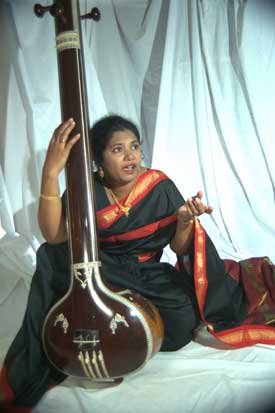
CONCLUSION
In conclusion, the Khyal gharanas are an important and integral part of the Hindustani classical music tradition. Each gharana has its own unique approach to performance, and its own roster of legendary artists who have helped to define and shape the tradition.
From the intricate melodic structures and complex rhythmic patterns to the emotional depth and drama of the performances, Khyal music has a beauty and complexity that continue to captivate audiences around the world.
While the Khyal gharanas face some challenges in the modern world, including competition from other forms of music and entertainment, there is no doubt that they will continue to be an important and vibrant part of the cultural heritage of India for many years to come. Through the ongoing efforts of talented musicians and scholars, the tradition will continue to evolve and grow, and its beauty and power will continue to inspire new generations of music lovers.
